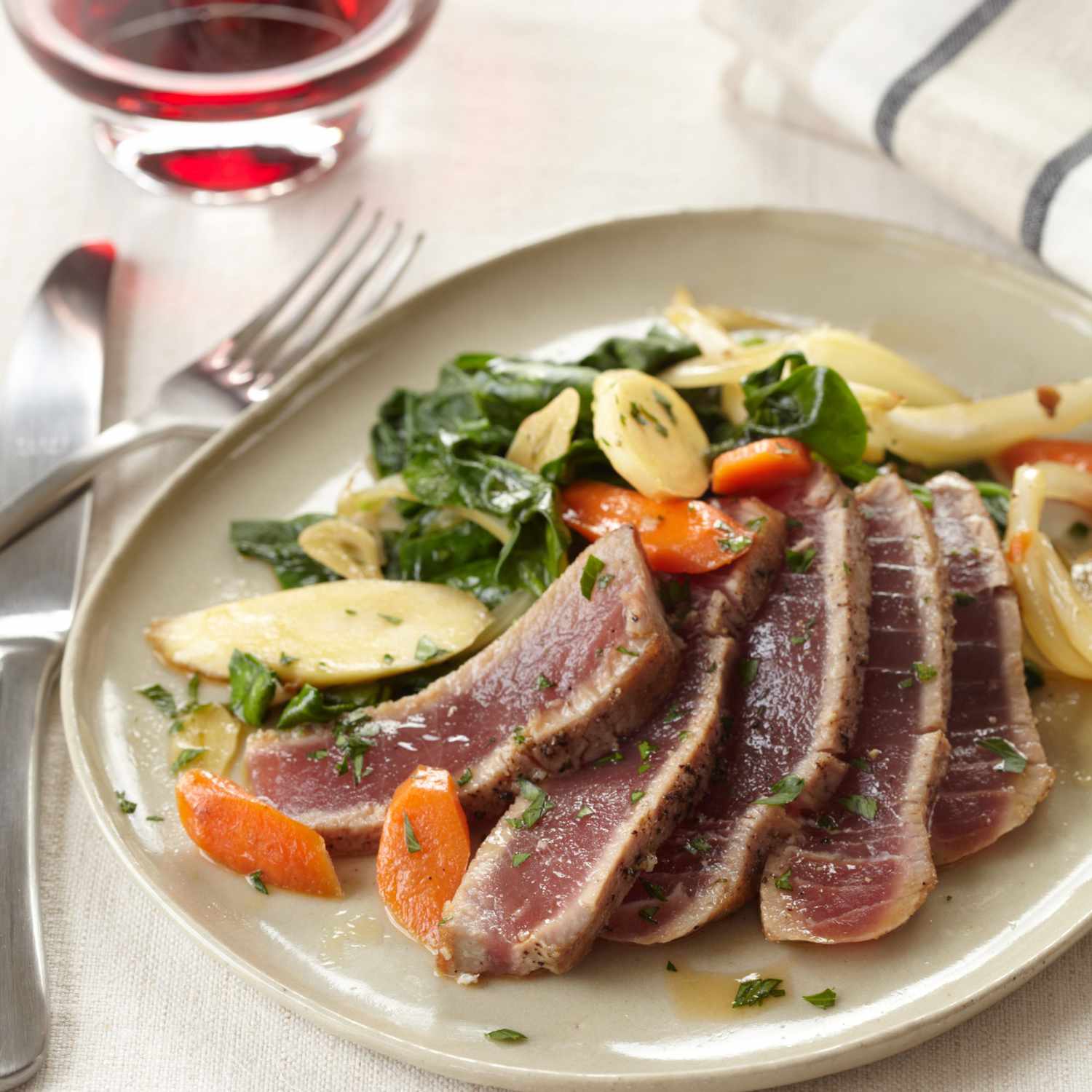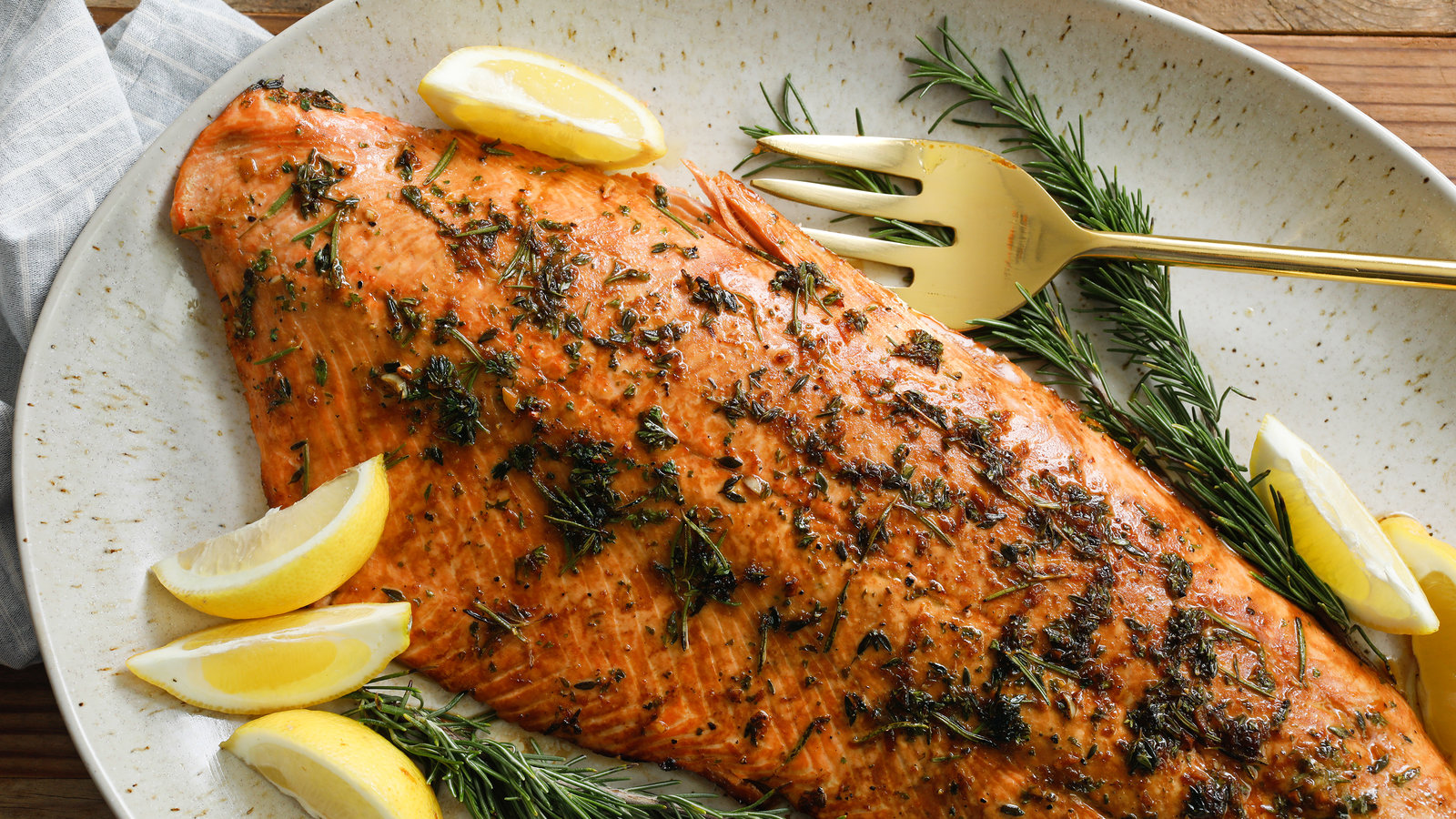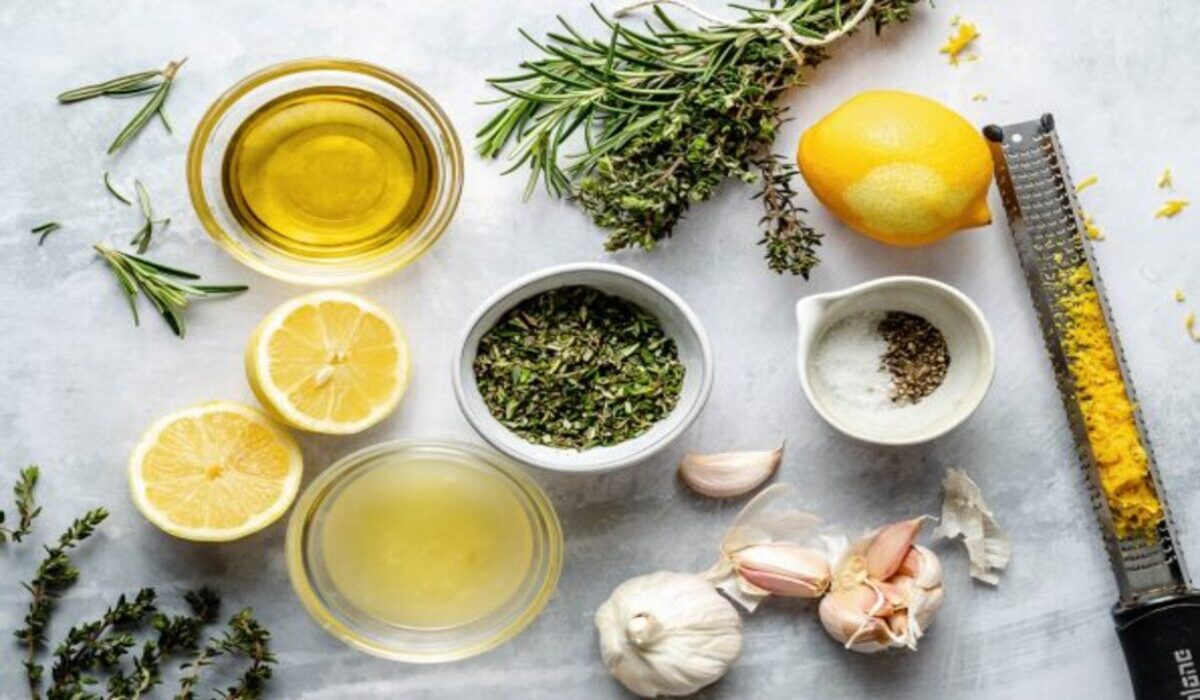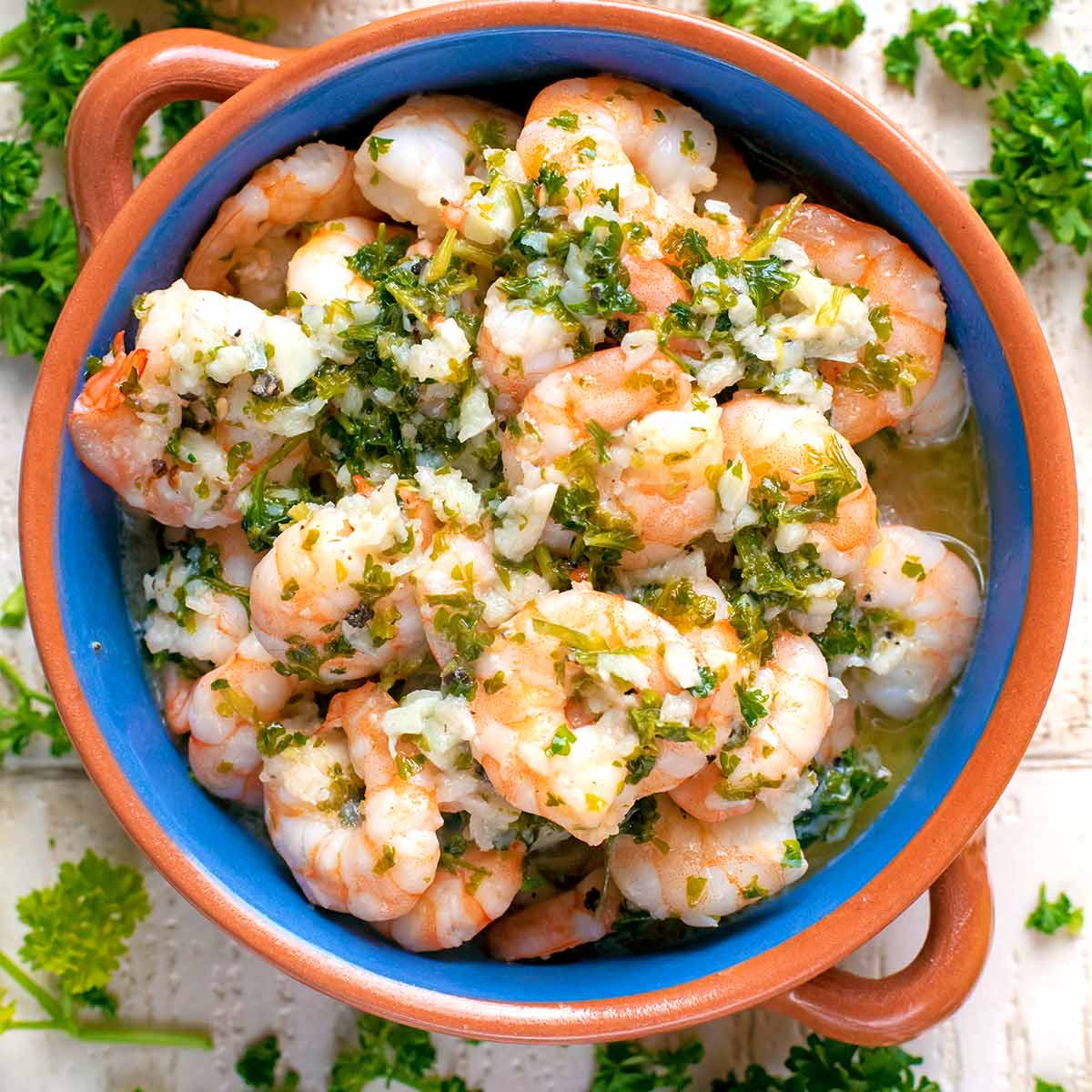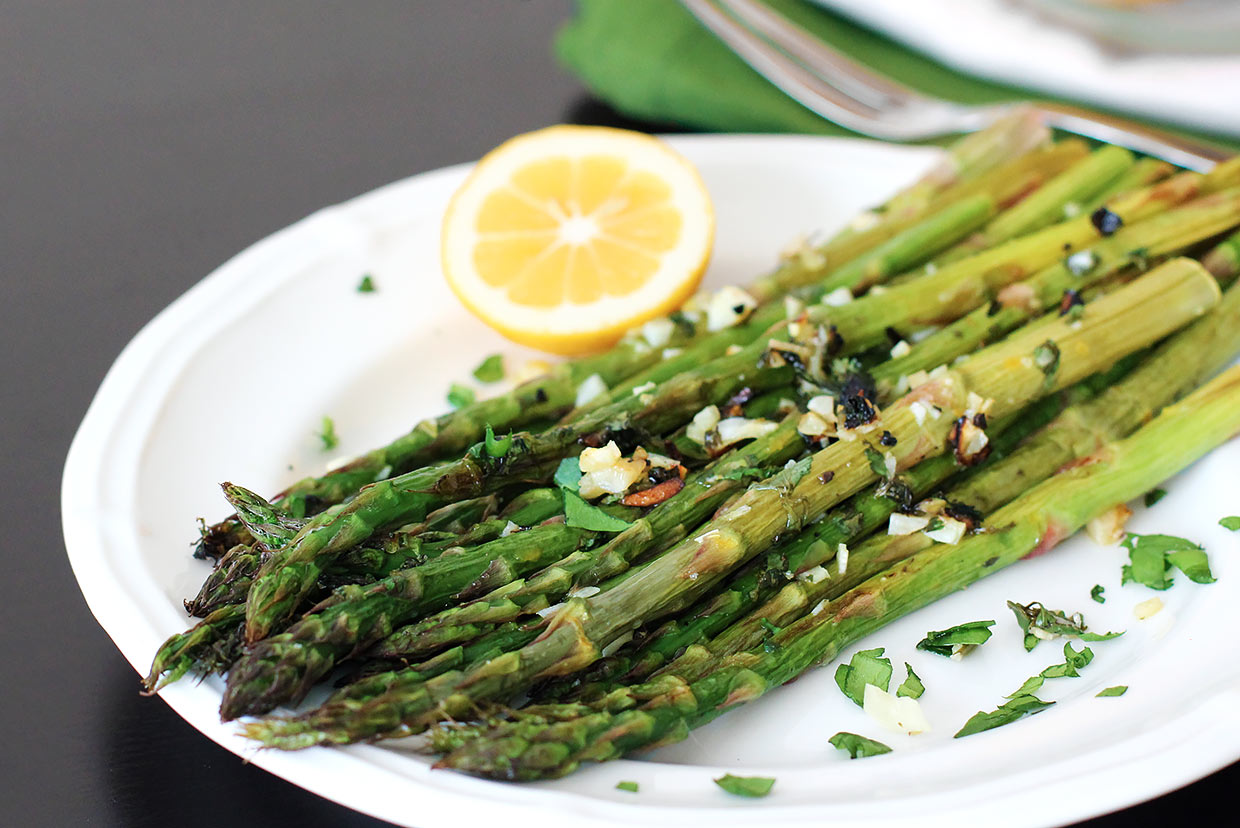Home>Gardening News and Trends>Gardening Trends>What Herbs Go Well With Fish
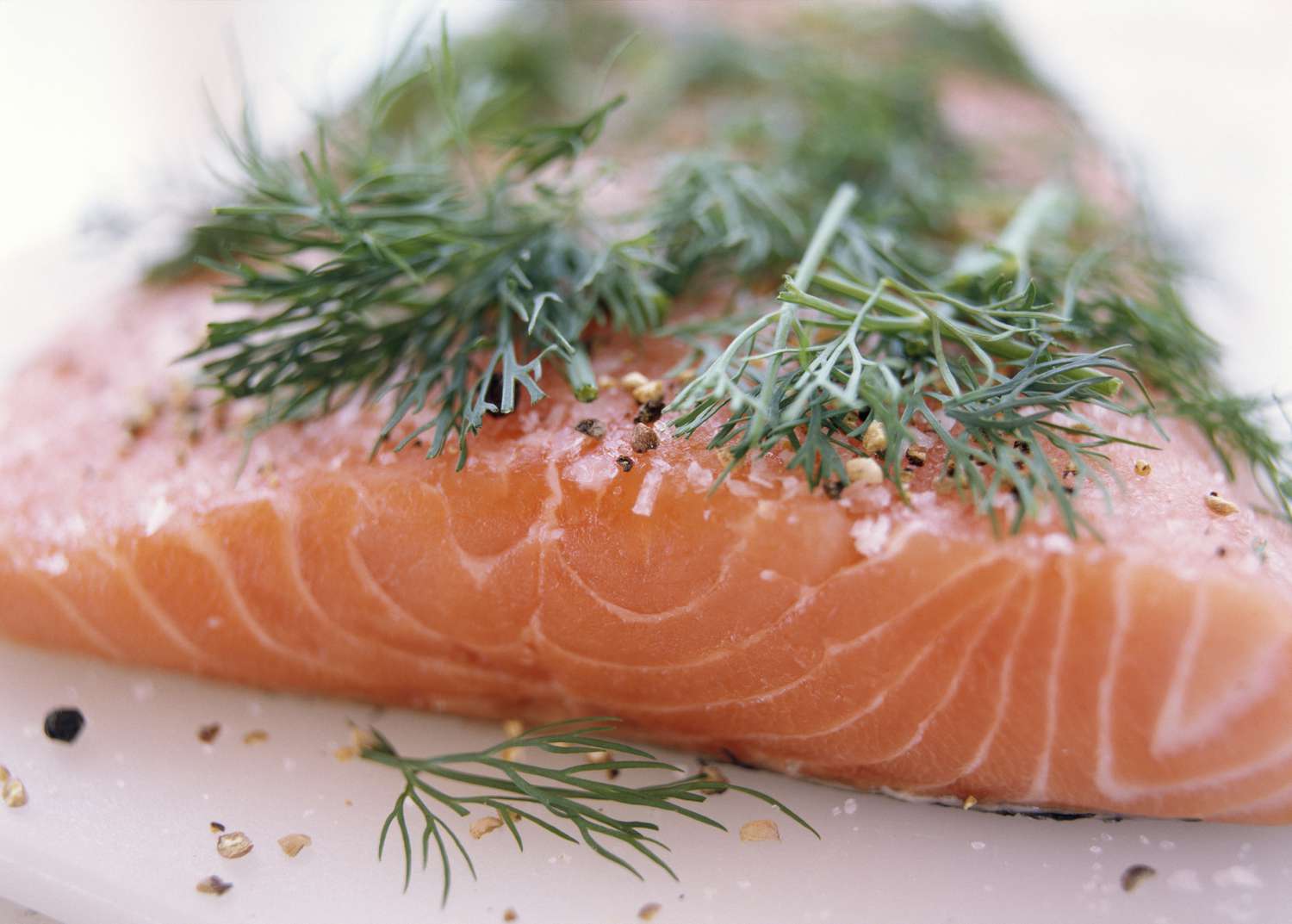

Gardening Trends
What Herbs Go Well With Fish
Modified: January 22, 2024
Discover the latest gardening trends and find out which herbs pair perfectly with fish, enhancing its flavor and bringing out the best in your seafood dishes.
(Many of the links in this article redirect to a specific reviewed product. Your purchase of these products through affiliate links helps to generate commission for Chicagolandgardening.com, at no extra cost. Learn more)
Table of Contents
Introduction
Fish is a versatile and delicious protein that can be prepared in numerous ways. Whether you’re grilling, baking, or pan-searing your favorite fish, adding herbs to the dish can elevate its flavor to new heights. Herbs not only add a burst of aromatic goodness but also bring out the natural flavors of the fish, creating a harmonious and delightful culinary experience.
In this article, we will explore the wonderful world of herbs that complement fish beautifully. From classic favorites like dill and parsley to more unique options like lemon balm and tarragon, these herbs will take your fish dishes to the next level.
When it comes to cooking fish, it’s essential to understand how different herbs can enhance its taste. Some herbs offer a gentle and herby note, while others add a zesty or earthy element. By knowing which herbs work best with fish, you can create a symphony of flavors that will excite your taste buds.
Whether you’re cooking salmon, cod, trout, or any other fish, experimenting with herbs can help you discover exciting new flavor combinations. So, let’s dive in and explore the best herbs to pair with fish!
Herbs That Complement Fish
When it comes to pairing herbs with fish, there is a wide range of options to choose from. Each herb brings its own unique flavor profile to the dish, enhancing the taste of the fish in different ways. Here are some of the best herbs that complement fish:
- Dill: Dill is a classic herb that works wonders with fish. Its delicate, feathery leaves and subtle anise flavor add a refreshing and aromatic touch to seafood dishes. Whether you’re making grilled salmon or creamy fish chowder, a sprinkle of fresh dill can elevate the flavors to perfection.
- Parsley: Parsley is a versatile herb that pairs well with various fish dishes. Its mild flavor and crisp, green leaves make it an excellent choice for garnishing seafood salads, pasta dishes, and grilled fish. It adds a fresh and vibrant element to the plate.
- Basil: Known for its rich and fragrant aroma, basil is a popular herb that brings a touch of Mediterranean charm to fish recipes. Whether you’re making a tomato-basil salmon bake or a lemony basil sauce for grilled fish, this herb adds a delightful burst of flavor.
- Tarragon: With its subtle licorice-like flavor, tarragon adds an elegant touch to fish dishes. It pairs exceptionally well with white fish like sole or halibut. Try using it in a creamy tarragon sauce or sprinkled over fish fillets before baking.
- Chives: Chives belong to the onion family and offer a mild, delicate onion flavor. They are commonly used as a finishing herb for fish preparations. Sprinkle chopped chives over grilled fish or use them to garnish fish soups and stews for an added burst of freshness.
- Thyme: Thyme is a versatile herb that complements a wide range of ingredients, including fish. Its earthy and slightly minty flavor pairs well with both white and oily fish. Use fresh thyme sprigs to infuse flavor into fish while baking or add dried thyme to marinades and herb rubs.
- Rosemary: With its intense piney aroma, rosemary adds a bold and flavorful element to fish dishes. It pairs exceptionally well with robust fish varieties like salmon and tuna. Create a delicious crust or rub by mixing minced rosemary with breadcrumbs and seasonings, then coat the fish before baking or grilling.
- Cilantro: Cilantro, also known as coriander leaves, is a popular herb in many cuisines. Its bright and citrusy flavor adds a refreshing twist to fish recipes. Use it in marinades, salsas, or even as a garnish for ceviche or fish tacos.
- Sage: Although commonly associated with poultry, sage can also enhance the flavor of fish. Its earthy and savory notes add depth to delicate fish dishes. Try using it in compound butter or sprinkled over grilled fish for a unique and aromatic twist.
- Lemon Balm: Lemon balm offers a sweet and lemony flavor that pairs well with fish. Its citrusy notes add brightness to seafood dishes, especially when used in sauces or marinades. It’s also great for infusing oils and vinegars with a hint of lemony flavor.
These herbs can be used individually or in combinations, depending on the flavor profile you want to achieve. Don’t be afraid to experiment and explore different herb combinations to find your favorite pairings with fish.
Dill
Dill is a widely used herb that pairs exceptionally well with fish. With its delicate feathery leaves and subtle anise-like flavor, dill adds a refreshing and aromatic touch to seafood dishes. Whether you’re grilling salmon, poaching cod, or making a creamy fish chowder, dill is a go-to herb for enhancing the flavors of fish.
When using dill, you have a few options. Fresh dill is ideal for adding a vibrant burst of flavor to your dishes. To use fresh dill, simply chop the leaves and sprinkle them over your fish just before serving or incorporate them into sauces and marinades. The fragrance and taste of fresh dill are best appreciated when it’s used as a finishing touch.
If fresh dill is not available, you can use dried dill as a substitute. Although the flavor won’t be as potent as fresh dill, it can still add a hint of that distinct dill taste. Dried dill is perfect for adding to rubs, marinades, and sauces that require a longer cooking time.
The combination of dill and fish is a classic pairing, and for good reason. The herb brings out the natural flavors of the fish while adding a refreshing and herbaceous note. Salmon and dill are particularly known for their affinity for one another. The rich and buttery texture of salmon is beautifully complemented by the delicate and slightly tangy flavor of dill.
One popular way to use dill with fish is by creating a dill sauce. A simple dill sauce can be made by combining mayonnaise, Greek yogurt, chopped fresh dill, lemon juice, and a pinch of salt and pepper. This creamy and tangy sauce pairs wonderfully with grilled fish or can be used as a dip for fish sticks or fried fish.
Another fantastic use for dill is in fish marinades. A marinade consisting of olive oil, lemon juice, minced garlic, and chopped fresh dill can infuse the fish with incredible flavor. Allow the fish to marinate for at least 30 minutes before cooking to allow the flavors to penetrate the flesh.
In addition to its delightful taste, dill also offers some health benefits. It contains essential oils, antioxidants, and vitamins such as vitamin C and vitamin A. Dill is also known for its ability to aid digestion and reduce inflammation.
Whether you’re a fan of delicate white fish or preferring a heartier salmon, dill is a versatile herb that can enhance the flavor and elevate your fish dishes. Its distinct and refreshing taste brings a touch of brightness to your seafood creations.
Parsley
Parsley is a versatile and commonly used herb that complements fish beautifully. With its mild flavor and crisp, green leaves, parsley adds a fresh and vibrant element to seafood dishes. Whether you’re making a grilled fish, fish pasta, or a seafood salad, parsley can enhance the flavors and make your dish visually appealing.
When it comes to using parsley with fish, there are a few ways to incorporate it. Fresh parsley is the best option as it has a brighter flavor and adds a pop of color to your dishes. You can chop fresh parsley finely and sprinkle it over grilled or baked fish just before serving. This adds a burst of freshness and a hint of herbiness to your dish.
Parsley can also be used as a garnish, adding visual appeal to your seafood creations. Sprinkle some whole parsley leaves on top of a creamy fish soup or scatter them over a platter of grilled fish to give it an inviting touch. The vibrant green color of parsley adds a beautiful contrast to the fish.
Another popular way to use parsley with fish is by incorporating it into a sauce or dressing. Chimichurri is a popular sauce made with parsley, garlic, olive oil, vinegar, and spices. It pairs incredibly well with grilled fish, adding a zesty and herbaceous flavor to the dish. You can also make a simple lemon-parsley sauce by combining chopped parsley, lemon juice, garlic, and olive oil. Drizzle this sauce over your fish to brighten up the flavors.
Parsley is not just a flavorful addition to fish dishes but also offers some health benefits. It’s packed with nutrients such as vitamins A, C, and K, as well as minerals like iron and calcium. Parsley is known for its antioxidant and anti-inflammatory properties, making it a great choice for promoting overall health.
Using parsley in your fish recipes is a great way to add a fresh and herbaceous touch to your dishes. Its mild flavor and versatility make it a perfect complement to a wide range of seafood. Whether you’re preparing a simple baked fish or an elaborate seafood feast, parsley can elevate the dish and impress your taste buds.
Basil
Basil, with its rich and fragrant aroma, is a wonderful herb that pairs exceptionally well with fish. Its vibrant green leaves and sweet, slightly peppery flavor can elevate the taste of your seafood dishes to new heights. Whether you’re grilling, baking, or pan-searing fish, basil can add a delightful burst of flavor.
When it comes to using basil with fish, there are several options. The most common way to incorporate basil is by using fresh leaves. Simply tear or chop the basil leaves and sprinkle them over your fish before or after cooking. The aromatic and slightly spicy taste of basil complements the natural flavors of the fish, creating a harmonious combination.
Basil can also be used to create delicious sauces and marinades for fish. A classic pairing is basil with tomato-based sauces. You can make a simple basil tomato sauce by sautéing onions and garlic, adding diced tomatoes, and finishing with a handful of chopped basil. This sauce is perfect for serving over grilled or baked fish.
If you’re looking to infuse the flavors of basil into your fish, try making a basil marinade. Blend fresh basil leaves with garlic, olive oil, lemon juice, and a touch of salt and pepper. Coat your fish with this marinade and let it sit for a few minutes before cooking. The basil-infused flavors will permeate the fish, resulting in a delicious and aromatic dish.
Basil isn’t limited to savory fish dishes alone; it can also be used in sweet and tangy preparations. Basil pairs surprisingly well with fruit, especially citrus fruits like lemon or mango. Create a refreshing salsa by combining chopped basil, diced mango, red onion, lime juice, and a pinch of chili flakes. This fruity basil salsa works wonders with grilled or pan-seared fish.
In addition to its fantastic flavor, basil also offers various health benefits. It is rich in antioxidants and essential oils, which promote overall health and well-being. Basil has anti-inflammatory properties and is a good source of vitamins A, K, and C.
With its versatile and aromatic nature, basil is a must-try herb for enhancing the flavors of fish dishes. Whether you’re cooking a simple fish fillet or preparing an elaborate seafood feast, incorporating basil will add a fragrant and delightful twist to your culinary creations.
Tarragon
Tarragon is an herb with a unique flavor profile that beautifully complements fish. With its subtle licorice-like taste and delicate leaves, tarragon adds an elegant touch to seafood dishes. It pairs exceptionally well with white fish like sole or halibut, enhancing their natural flavors and creating a delightful culinary experience.
When using tarragon with fish, fresh is often the preferred option. The tender leaves of fresh tarragon offer a more pronounced and vibrant flavor. Chop the fresh tarragon leaves and sprinkle them over your fish before baking or grilling to infuse it with the herb’s distinct taste.
Tarragon is a popular choice for creating flavorful sauces for fish. One classic dish that features tarragon sauce is Sole with Tarragon Sauce. The sauce combines butter, shallots, white wine, cream, and, of course, tarragon. The creamy and herbaceous flavors of the sauce perfectly complement the delicate nature of white fish.
Another way to enjoy the unique flavor of tarragon with fish is by using it in compound butter. Mix chopped tarragon leaves into softened butter along with some lemon zest, salt, and pepper. Roll this flavored butter into a log and refrigerate until firm. When ready to serve your fish, slice a pat of the tarragon butter and let it melt over the hot fish, infusing it with a delectable herbaceousness.
Tarragon can also be used to infuse vinegar or oil with its distinctive flavor. This can be achieved by steeping tarragon leaves in vinegar or adding them to a bottle of olive oil. The resulting tarragon-infused vinegar or oil can be used to dress salads, marinate fish, or drizzle over cooked fish fillets for added complexity.
Aside from its culinary uses, tarragon has some potential health benefits as well. It contains antioxidants, vitamins, and minerals that contribute to overall well-being. Tarragon has been traditionally used to aid digestion, promote appetite, and improve sleep quality.
With its elegant and unique flavor, tarragon is a herb that will take your fish dishes to a whole new level. Whether you’re preparing a simple weeknight dinner or a fancy seafood entrée, the addition of tarragon will add a touch of sophistication and enhance the flavors of your fish.
Chives
Chives, belonging to the onion family, are a versatile herb that adds a mild and delicate onion flavor to fish dishes. With their slender and grass-like appearance, chives are commonly used as a finishing herb for seafood preparations. Sprinkling chopped chives over grilled fish, incorporating them into fish soups and stews, or using them as a garnish can add a fresh and vibrant touch to your fish dishes.
Fresh chives are the preferred choice when it comes to using this herb with fish. The bright green color and mild onion flavor of fresh chives complement the delicate flavors of fish. Simply chop the chives finely and sprinkle them over your cooked fish just before serving. This not only adds a pop of color but also a hint of mild onion essence.
In addition to their visual appeal, chives offer a subtle onion flavor that works well with various seafood. Whether you’re grilling, baking, or sautéing fish, chives can elevate the taste of your dish. They pair particularly well with white fish like cod, flounder, or sole.
Chives can also be incorporated into creamy sauces or dips for a burst of flavor. Mix chopped chives with sour cream or Greek yogurt, a squeeze of lemon juice, and a pinch of salt and pepper to create a simple and refreshing chive dip. This is perfect for serving alongside fried fish or fish sticks.
Another way to enjoy chives with fish is by using them in compound butter. Mix finely chopped chives into softened butter along with some garlic, lemon zest, salt, and pepper. Roll the compound butter into a log and refrigerate until firm. When your fish is ready, slice a pat of the chive butter and let it melt over the hot fish, imparting a wonderful onion flavor.
Chives not only add flavor to your fish dishes but also offer some health benefits. They are rich in vitamins A and K and contain antioxidants that promote overall well-being. Chives are also known for their potential antiviral and antibacterial properties.
Whether you’re preparing a light fish salad, a hearty fish stew, or a simple grilled fillet, chives can enhance the flavors and provide a subtle onion kick. Their mild and delicate nature makes them a versatile herb to have on hand when cooking fish.
Thyme
Thyme is a versatile herb that complements a wide range of ingredients, including fish. With its earthy and slightly minty flavor, thyme adds depth and complexity to fish dishes. Whether you’re cooking white fish like tilapia or a rich, oily fish like salmon, thyme can enhance the flavors and create a delightful culinary experience.
When using thyme with fish, both fresh and dried thyme can be used, depending on your preference. Fresh thyme sprigs are ideal for infusing flavor into fish while baking or roasting. Simply lay a few sprigs of fresh thyme on top of the fish fillets before cooking, and the herb’s aromatic oils will be released, imparting a wonderful fragrance and taste.
If fresh thyme is not available, dried thyme can also be used. Dried thyme has a more concentrated flavor, so use it sparingly. Add a pinch of dried thyme to marinades, herb rubs, or seasoning blends for fish to enhance the flavors.
Thyme pairs well with both white and oily fish varieties. It adds a savory and earthy note that complements the natural flavors of the fish. White fish like cod or sole benefit from the herb by adding depth to their mild flavors. Oily fish like salmon or mackerel benefit from thyme’s ability to cut through their richness and provide balance.
One of the classic ways to use thyme with fish is by creating a lemon and thyme marinade. Mix together olive oil, lemon juice, minced garlic, chopped fresh thyme, salt, and pepper. Let the fish marinate in this mixture for at least 30 minutes before cooking. The combination of lemon and thyme infuses the fish with bright and herbaceous flavors.
Thyme can also be added to compound butters or sauces for fish. Create a thyme-infused butter by blending softened butter with chopped thyme leaves and a pinch of salt. Spread this compound butter on top of cooked fish to add a rich and flavorful finishing touch.
In addition to its delicious taste, thyme offers some potential health benefits. It contains antioxidants and essential oils that have antimicrobial and anti-inflammatory properties. Thyme has been used traditionally to aid digestion and support respiratory health.
With its versatile and robust flavor, thyme is a fantastic herb to experiment with when cooking fish. Whether you’re cooking a simple fish fillet or preparing a more elaborate seafood dish, thyme can add a savory and aromatic element that takes your fish to the next level.
Rosemary
Rosemary is an aromatic herb that adds a bold and flavorful element to fish dishes. With its intense piney aroma and distinct taste, rosemary pairs exceptionally well with robust fish varieties like salmon and tuna. The herb can be used in various forms to enhance the flavors of your fish preparations.
One popular way to use rosemary with fish is by creating a delicious crust or rub. Finely mince fresh rosemary leaves and combine them with breadcrumbs, minced garlic, olive oil, salt, and pepper. Pat this mixture onto the surface of the fish fillets before baking or grilling. The resulting crust not only adds flavor but also adds a delightful texture to the fish.
If you prefer a milder infusion of rosemary flavor, you can also use whole sprigs of fresh rosemary to infuse the fish while cooking. Lay a few sprigs over the fish fillets before baking or grilling, allowing the herbaceous oils to seep into the fish. When cooked, the fish will have a subtle rosemary undertone that enhances the overall taste.
Rosemary can also be used in marinades and sauces for fish. Create a simple marinade by mixing together chopped rosemary, minced garlic, lemon juice, olive oil, and a touch of salt and pepper. Let the fish marinate in this mixture for at least 30 minutes before cooking. The flavors of rosemary and lemon will infuse the fish, giving it a bright and herbaceous taste.
When making a sauce, rosemary can be used to add depth and complexity. Sauté chopped rosemary in olive oil or butter, then add white wine, lemon juice, and a touch of cream for a creamy rosemary sauce. This sauce pairs well with grilled or pan-seared fish, adding a luxurious and aromatic element to the dish.
Aside from its fantastic flavor, rosemary also offers potential health benefits. It contains antioxidants and has antimicrobial and anti-inflammatory properties. Rosemary has been traditionally used for enhancing memory, supporting digestion, and improving circulation.
Whether you’re a fan of salmon, tuna, or other sturdy fish varieties, rosemary is a herb that can take your fish dishes to new heights. Its intense aroma and distinct flavor add depth and character, creating a truly memorable culinary experience.
Cilantro
Cilantro, also known as coriander leaves, is a popular herb in many cuisines that adds a refreshing and vibrant twist to fish dishes. With its bright and citrusy flavor, cilantro brings a unique element to seafood recipes. Whether you’re making fish tacos, ceviche, or grilled fish, cilantro can enhance the flavors and create a delightful culinary experience.
When using cilantro with fish, it’s best to use fresh leaves for their vibrant taste and aromatic qualities. Chop the cilantro leaves finely and sprinkle them over your cooked fish just before serving. The citrusy notes of cilantro add a burst of freshness and elevate the overall flavor profile of the dish.
Cilantro is an excellent choice for creating sauces and salsas that pair well with fish. Adding chopped cilantro to a salsa made with tomatoes, onions, jalapenos, lime juice, and a dash of salt creates a vibrant and zesty topping for grilled or fried fish. The combination of the cilantro’s citrusy flavor with the tang of lime and heat from the jalapenos adds a delicious complexity to the dish.
You can also create a cilantro-lime marinade by blending fresh cilantro leaves, lime juice, garlic, olive oil, salt, and pepper. Let the fish marinate in this mixture for at least 30 minutes before cooking to infuse it with the herb’s bright and tangy flavors. This marinade works particularly well with fish tacos or grilled fish fillets.
In addition to its fantastic taste, cilantro offers some potential health benefits. It is a rich source of vitamins A and K, as well as antioxidants. Cilantro is known for its ability to aid digestion and reduce inflammation in the body.
With its unique citrusy flavor and vibrant green color, cilantro is a versatile herb that can add a refreshing twist to your fish dishes. Whether you’re preparing a simple weeknight fish dinner or a festive seafood feast, the addition of cilantro will bring a burst of flavor and brightness to your culinary creations.
Sage
Sage is an herb that is commonly associated with poultry, but it can also enhance the flavor of fish dishes. With its earthy and savory notes, sage adds depth and complexity to delicate fish preparations. Whether you’re grilling, baking, or sautéing fish, sage can provide a unique and aromatic twist.
When using sage with fish, it is best to use fresh leaves for their robust flavor. Chop the fresh sage leaves finely and sprinkle them over your fish before cooking. The herb’s aromatic oils will be released during the cooking process, infusing the fish with a wonderful fragrance and taste.
Sage works particularly well with mild white fish like sole or halibut. Its earthy flavor complements the delicate nature of these fish varieties. Sprinkling sage over the fish before baking or grilling adds an herbaceous note and enhances the overall taste.
One popular way to use sage with fish is by creating a sage and lemon butter sauce. Heat butter in a pan, and once melted, add chopped sage leaves and a squeeze of lemon juice. Allow the butter to infuse with the sage and lemon flavors for a few minutes before drizzling it over the cooked fish. This sauce adds richness and a subtle herby tang to the dish.
Another way to incorporate sage into fish preparations is by using it in herb rubs. Combine finely chopped sage leaves with other herbs and spices, such as thyme, rosemary, garlic powder, salt, and pepper. Rub this mixture onto the fish before cooking to create a flavorful and aromatic crust.
In addition to its delicious taste, sage offers potential health benefits. It contains antioxidants and essential oils that have antimicrobial and anti-inflammatory properties. Sage has been traditionally used for its medicinal properties, including aiding digestion and supporting cognitive function.
While sage is often associated with poultry dishes, it is a versatile herb that can also enhance the flavors of fish. Its earthy and savory flavors provide a unique twist and depth to your fish preparations, creating a truly memorable culinary experience.
Lemon Balm
Lemon balm is a herb that brings a refreshing twist to fish dishes with its citrusy and lemony flavor. With its bright green leaves and delightful aroma, lemon balm adds a burst of freshness and tang to seafood recipes. Whether you’re grilling, baking, or poaching fish, incorporating lemon balm can elevate the flavors and create a delightful culinary experience.
When using lemon balm with fish, fresh leaves are the preferred choice for their vibrant taste and aromatic qualities. Simply chop the lemon balm leaves finely and sprinkle them over your fish after cooking or incorporate them into sauces and marinades. The citrusy notes of lemon balm add a bright and tangy element that beautifully complements the fish.
Lemon balm pairs exceptionally well with white fish varieties. Its citrusy flavor can enhance the delicate flavors of white fish like cod or flounder. Adding a sprinkle of lemon balm over the cooked fish before serving imparts a refreshing and zesty taste.
Incorporating lemon balm into dipping sauces or dressings is another great way to enjoy its flavor with fish. Mix chopped lemon balm leaves into Greek yogurt, add a squeeze of lemon juice, a pinch of salt, and pepper to create a tangy and herbaceous dip. This dip is perfect for serving alongside fried fish or as a topping for fish tacos.
Another unique way to use lemon balm with fish is by infusing oils or vinegars. Steeping lemon balm leaves in olive oil or white vinegar for a few days imparts a lovely lemony flavor to the liquid. Use this infused oil or vinegar to drizzle over cooked fish or in salad dressings for a refreshing tang.
In addition to its delightful flavor, lemon balm offers potential health benefits. It is known for its calming properties and can help reduce stress and anxiety. Lemon balm is also rich in antioxidants and may have anti-inflammatory effects on the body.
Whether you’re preparing a light and simple fish dish or creating a more elaborate seafood recipe, incorporating lemon balm will add a bright and tangy touch. Its citrusy and refreshing flavor elevates the taste of fish, leaving you with a memorable and delicious culinary experience.
Pairing Suggestions
Now that we’ve explored various herbs that complement fish beautifully, let’s discuss some pairing suggestions to inspire your culinary creativity. These combinations not only enhance the flavors of the fish but also create delicious and harmonious taste profiles that will leave you wanting more.
1. Grilled Salmon with Dill and Lemon: The rich and buttery flavor of salmon pairs perfectly with the fresh and slightly tangy taste of dill. Sprinkle chopped dill over grilled salmon and squeeze some lemon juice for a burst of brightness.
2. Baked Cod with Thyme and Garlic: Thyme’s earthy flavor adds depth to mild white fish like cod. Combine fresh thyme leaves with minced garlic, olive oil, salt, and pepper, and rub the mixture onto the fish before baking for a flavorful result.
3. Pan-Seared Halibut with Basil and Tomato: Basil’s fragrant aroma and sweet taste go hand in hand with tomato-based dishes. Sear halibut fillets and top with a tomato-basil sauce for a burst of Mediterranean flavors.
4. Lemon-Balm Infused Tilapia with Citrus Salsa: Infuse tilapia fillets with lemon balm flavor by cooking them in lemon-balm-infused oil. Serve the fish with a fresh and tangy citrus salsa made of diced oranges, grapefruits, and lime, tossed with chopped lemon balm.
5. Grilled Tuna with Rosemary and Garlic: Rosemary’s intense flavor and aroma make it an excellent pairing with robust fish like tuna. Create a marinade with minced garlic, rosemary leaves, olive oil, and lemon juice. Marinate the tuna steaks and grill them to perfection.
6. Cilantro-Crusted Snapper with Mango Salsa: Coat snapper fillets with a crust made from cilantro, breadcrumbs, lime zest, and salt. Pan-fry the snapper until crispy, then serve with a refreshing mango salsa that combines diced mango, red onion, cilantro, lime juice, and a hint of chili heat.
7. Sage Butter Scallops: Create a decadent dish by sautéing scallops in a generous amount of sage-infused butter. The earthy and savory notes of sage complement the sweet and delicate taste of scallops beautifully.
These are just a few examples of how herbs can be paired with different types of fish to create exceptional flavor combinations. Feel free to experiment and mix and match herbs according to your taste preferences. Don’t be afraid to get creative and discover your own unique pairings that will tantalize your taste buds.
Tips for Using Herbs with Fish
Using herbs with fish can take your culinary creations to the next level. Here are some helpful tips to ensure a successful and flavorful integration of herbs in your fish dishes:
1. Use fresh herbs whenever possible: Fresh herbs have a vibrant flavor that can enhance the taste of fish. When available, opt for fresh herbs over dried ones to maximize the aroma and freshness.
2. Experiment with herb combinations: Don’t be afraid to mix and match different herbs to find unique and exciting flavor combinations. Consider the taste profile of the fish and select herbs that complement and enhance its natural flavors.
3. Adjust herb quantities to your preference: Everyone’s taste buds are different, so feel free to adjust the amount of herbs used according to your personal preference. Start with a smaller quantity and add more gradually until you achieve the desired flavor.
4. Timing is key: Consider when to add the herbs to your fish preparation. Some herbs, like delicate ones such as cilantro or dill, are best added at the end to preserve their freshness. Other herbs with robust flavors, like rosemary or sage, can be added before cooking to infuse the fish with their aromas.
5. Don’t overpower the fish: Be mindful not to overpower the natural flavor of the fish with excessive amounts of herbs. The herbs should enhance and complement the fish, not dominate its taste. Start with a moderate amount and adjust accordingly.
6. Properly store fresh herbs: To maintain the freshness and flavor of your herbs, store them properly. Wrap fresh herbs in a damp paper towel, place them in a plastic bag, and store them in the refrigerator. This will help extend their shelf life.
7. Consider the cooking method: Different cooking methods can affect how herbs interact with fish. For example, grilling can intensify the flavors of herbs, while baking can allow the herb flavors to gently infuse the fish.
8. Balance flavors with other ingredients: Consider the other ingredients used in your fish dish and how they interact with the herbs. For example, citrus flavors like lemon or lime can enhance the freshness of herbs, while cream-based sauces can mellow and balance their intensity.
9. Taste as you go: Throughout the cooking process, taste your dish and make adjustments as needed. This will help you achieve the perfect balance of flavors and ensure that the herbs are not overpowering.
10. Garnish with fresh herbs: Adding a sprinkle of fresh herbs as a garnish right before serving can provide an extra burst of flavor, aroma, and visual appeal to your fish dishes.
By following these tips, you’ll be able to harness the full potential of herbs when cooking fish. Incorporating herbs thoughtfully and skillfully can elevate your fish dishes, creating memorable and delightful meals.
Conclusion
Using herbs in your fish dishes can transform a simple meal into a sensational culinary experience. The right combination of herbs can enhance and elevate the natural flavors of fish, creating a symphony of tastes on your plate. From the delicate and refreshing notes of dill and parsley to the robust earthiness of thyme and sage, each herb brings its own unique flair to your seafood creations.
When using herbs with fish, consider the flavor profile of the fish itself, as well as the overall concept of your dish. Experiment with different herb combinations and cooking methods to discover your favorite pairings. Whether you’re grilling, baking, or sautéing fish, there’s an herb that can complement and enhance its taste.
Remember to use fresh herbs whenever possible to enjoy their vibrant flavors and aromas. Adjust the amount of herbs according to your preferences, being careful not to overpower the fish. Timing is important as well; add delicate herbs towards the end of cooking to preserve their freshness, while heartier herbs can be added earlier to infuse their flavors into the fish.
Properly storing fresh herbs and tasting your dish as you cook can help you achieve the perfect balance of flavors. Also, consider the other ingredients in your recipe and how they interact with the herbs to create a harmonious combination of tastes.
Whether you’re preparing a simple grilled fish fillet or an elaborate seafood feast, incorporating herbs can take your fish dishes to new heights. These culinary gems not only provide exceptional flavor but also offer potential health benefits, making them a valuable addition to your cooking repertoire.
So, don’t be afraid to get creative and explore the wonderful world of herbs in your fish preparations. Your taste buds will thank you as you savor the delightful flavors and aromas that herbs bring to your dishes. Enjoy the journey of discovering your favorite herb and fish pairings and create memorable culinary moments at every meal.


